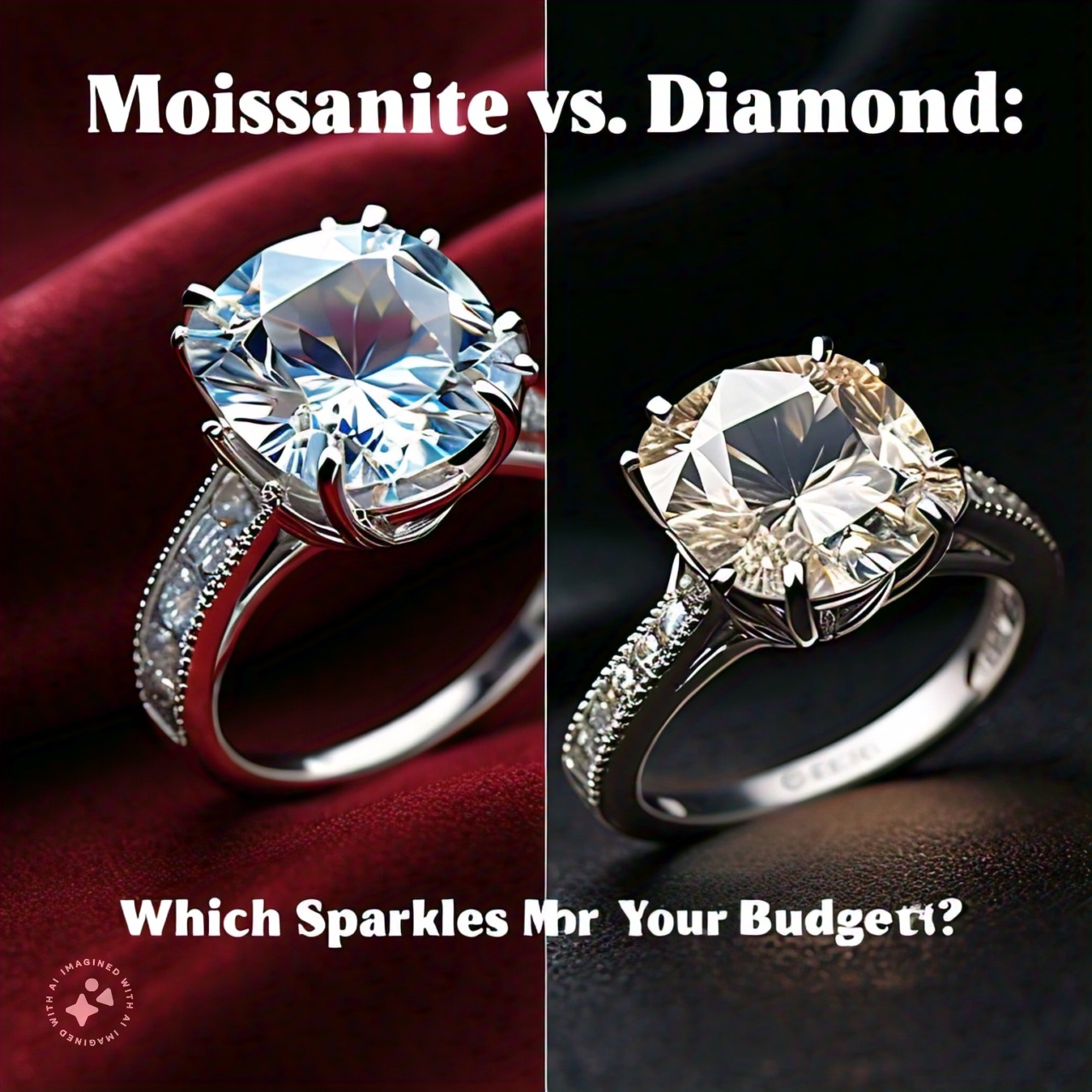Post Preview
Key Takeaways
- Compare the visual and physical properties of moissanite and diamond
- Evaluate the cost-effectiveness of each gemstone
- Understand the ethical considerations and environmental impact
- Gain insights into consumer choices and preferences
Table of Contents
- Visual and Physical Properties
- Cost-Effectiveness
- Ethical Considerations
- Environmental Impact
- Consumer Choices and Preferences
- Conclusion
Moissanite and diamonds are popular choices for engagement rings, each offering unique benefits. Moissanite is a lab-created gem known for its exceptional brilliance and fire, often outshining diamonds in terms of sparkle. It’s also significantly more affordable, making it a budget-friendly option. Prized for their natural origin and enduring value, diamonds have a classic appeal and are considered the traditional choice for engagement rings. They are available in various cuts, colors, and clarities, allowing for personalized selection. Ultimately, the choice between moissanite and diamond depends on personal preference, budget, and the desired level of sparkle.
Visual and Physical Properties
Understanding the differences in appearance and durability between moissanite vs diamond is crucial for making an informed choice. Because of their exceptional fire and brightness, diamonds are known for having a high refractive index of 2.42. This allows them to reflect and refract light in a manner that creates their signature sparkle. In comparison, moissanite boasts an even higher refractive index ranging from 2.65 to 2.69, which can result in a more intense and fiery sparkle under certain lighting conditions, giving it a unique allure.
Moissanite, discovered in a meteor crater by the Nobel Prize-winning chemist Henri Moissan, is lauded for its remarkable origins and hardness. Moissanite has a mineral hardness grade of 9.25, nearly as high as diamonds, with a perfect 10. This significant hardness level makes both gemstones incredibly durable, resistant to scratching, and suitable for daily wear, whether in engagement rings or other types of jewelry.
Cost-Effectiveness
Moissanite offers a significantly more affordable alternative to diamonds, appealing to budget-conscious consumers without compromising appearance. Typically, a moissanite gemstone costs between 10% and 15% of the price of a diamond of similar size and quality. This cost-effectiveness allows buyers to choose larger stones or more intricate settings without exceeding their budget, providing excellent value for those seeking a luxurious look at a more reasonable price.
For example, a one-carat diamond can cost anywhere from $3,000 to over $10,000, depending on cut, clarity, and color factors. In contrast, one-carat moissanite generally costs between $300 and $600. This substantial price difference makes moissanite an attractive option for those who want to achieve the elegance and sparkle of diamond jewelry without the significant financial investment. Consequently, moissanite has become a popular choice for engagement rings and other fine jewelry, offering beauty and affordability.
Ethical Considerations
The ethical implications of choosing moissanite over diamonds are significant and multifaceted. Diamonds, especially those that are not certified as conflict-free, come with various ethical concerns, including human rights abuses, child labor, and the funding of armed conflicts, often known as “blood diamonds.” These issues add a moral dimension to the decision-making process for potential buyers.
Choosing a lab-created gemstone like moissanite ensures that your purchase does not contribute to these ongoing issues associated with diamond mining. Moissanite, which is almost exclusively produced in laboratories, offers a conflict-free and ethically sound alternative. For socially conscious consumers, opting for moissanite provides peace of mind, knowing their choice does not support unethical mining practices.
Environmental Impact
Extracting natural diamonds has a substantial environmental footprint. The process requires extensive mining operations that disrupt ecosystems, consume vast amounts of energy, and result in significant ecological damage. Activities like open-pit and underground mining destroy habitats, cause soil erosion, and pollute water.
In contrast, moissanite, which is often lab-created, presents an environmentally friendly alternative. Lab-grown moissanite has a minor environmental impact because it involves fewer resources, lower energy consumption, and minimal ecological disruption. This process generates a fraction of the greenhouse gas emissions associated with traditional diamond mining, making it a more sustainable option. This topic has been discussed in depth in a Nature article, highlighting the benefits of lab-created gems.
Consumer Choices and Preferences
What do consumers want? This section investigates current trends and preferences, presenting data on how moissanite and diamonds fare in the eyes of different customer demographics. Younger generations, particularly millennials and Gen Z, increasingly prioritize sustainability, ethical sourcing, and affordability when purchasing. These values have shifted market dynamics in the jewelry industry.
According to surveys, many consumers cannot distinguish between moissanite and diamonds with the naked eye, especially when set in intricate jewelry designs. This visual similarity and the ethical and cost advantages make moissanite increasingly attractive. Consumer preferences lean towards options that offer a harmonious balance of aesthetics, value, and ethical considerations. A Forbes piece sheds light on this ongoing trend, underscoring the significant impact of young consumers on the jewelry market.
Conclusion
Summarizing the pros and cons of moissanite and diamonds helps readers decide which gemstone suits their needs and values. While moissanite offers greater affordability, ethical peace of mind, and comparable brilliance, diamonds hold a time-honored place as a symbol of prestige and everlasting love. Both gems have unique merits and can cater to different tastes and values.
The higher price may be justified for those drawn to traditional luxury and the historical significance of diamonds. On the other hand, budget-conscious and ethically-minded shoppers might find that moissanite strikes the perfect balance. Ultimately, the choice lies in individual preferences, budget constraints, and the ethical considerations of the consumer.
Stay in touch to get more updates & news on Hintinsider!




